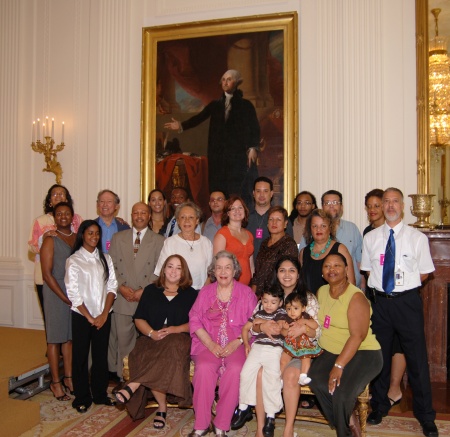In the Drawing Room
Last week, Susan Buck, Architectural Finishes Conservator, visited Montpelier to continue work on two ongoing projects in the drawing room (M108): the search for curtain hanging evidence and the hunt for clues about the original wallpaper.

Small wooden markers show the depth and angle of nail holes, which might have been used to secure drapery hardware.
The search for evidence of how curtains were displayed:
One Madison era visitor mentioned the windows in the drawing room were “hung with light silken drapery.”[1] But, how were the curtains suspended and what design did the Madisons choose?
To learn as much as possible about the drawing room curtains, we are searching for physical clues for drapery hardware. Having already eliminated the premise that the Madisons had cornices above the windows because no physical evidence survives, Dr. Buck performed additional forensic work to see whether wooden laths were nailed directly to the top of the window frame to hold the window treatments. Read the rest of this entry »



 Posted by montpelierrestoration
Posted by montpelierrestoration 